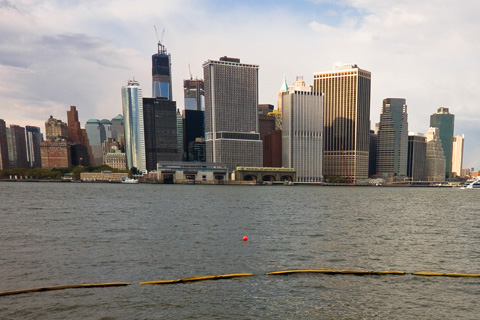
We can’t immediately link Hurricane Sandy itself to climate change, says climate scientist Cynthia Rosenzweig, but the flooding damage we can. Partly due to global warming, sea level has climbed about a foot in the NYC area over the past century, giving storm surges a “step up” along the coast.
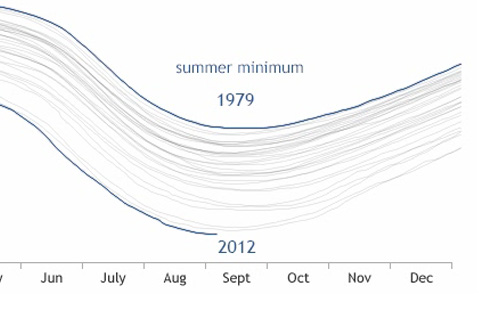
Arctic sea ice extent set a new record low at the end of the summer melt season on September 16, 2012. But extent is not the only quality of the ice that is changing. Wind and ocean circulation patterns are conspiring with a warmer climate to reduce the amount of year-round (multi-year) ice, transforming the remaining ice into a younger, thinner version of its old self.

Imagine heat waves like the one last July coming more often & lasting longer: that’s the projection from climate models for the middle of this century based on one future emissions path.
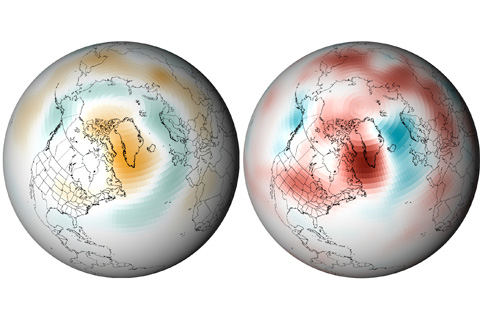
A series of unusually strong, long-lasting high pressure systems has parked over Greenland this summer. As many a weather forecaster has explained, high pressure generally leads to calm winds and sunny skies, both of which boost temperatures during the all-day sunshine of mid-summer at high latitudes. The conditions contributed to widespread melting of the ice sheet.

In September 2011, Arctic sea ice reached its second-lowest minimum extent in the satellite record.
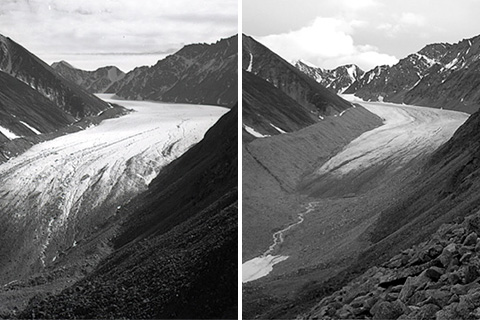
Data from 2010 indicate that mountain glaciers predominantly lost mass, and preliminary data from 2011 indicate a continuation of the same long-term trend.
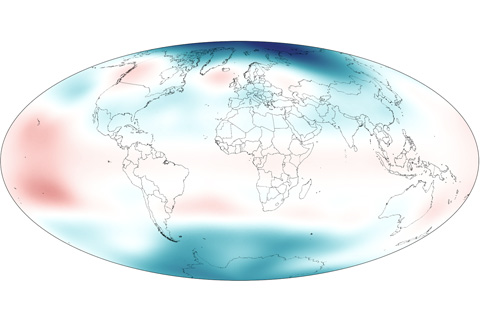
In early 2011, stratospheric temperatures rose over the tropics due to La Nina while temperatures over the poles fell below the long-term average.
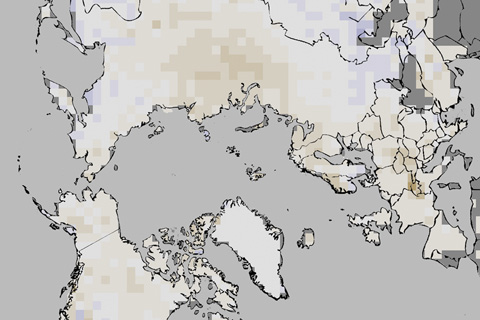
In 2011, annual snow cover extent over Northern Hemisphere continents (including the Greenland ice sheet) averaged 24.7 million square kilometers, which is 0.3 million square kilometers less than the long-term average.

In 2011, La Niña and the Pacific Decadal Oscillation cooled parts of the Pacific Ocean, but unusually warm temperatures predominated elsewhere.
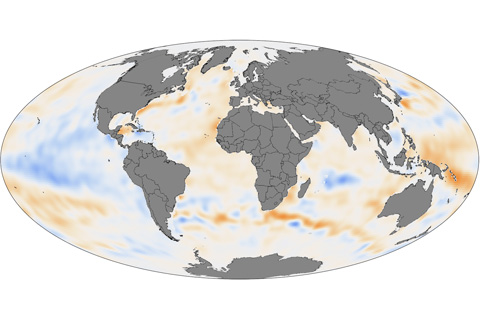
Except for some La Niña-cooled regions of the tropical Pacific and a few other cool spots, the upper ocean held more heat than average in 2011 in the Pacific, Atlantic, Indian, and Southern Oceans.